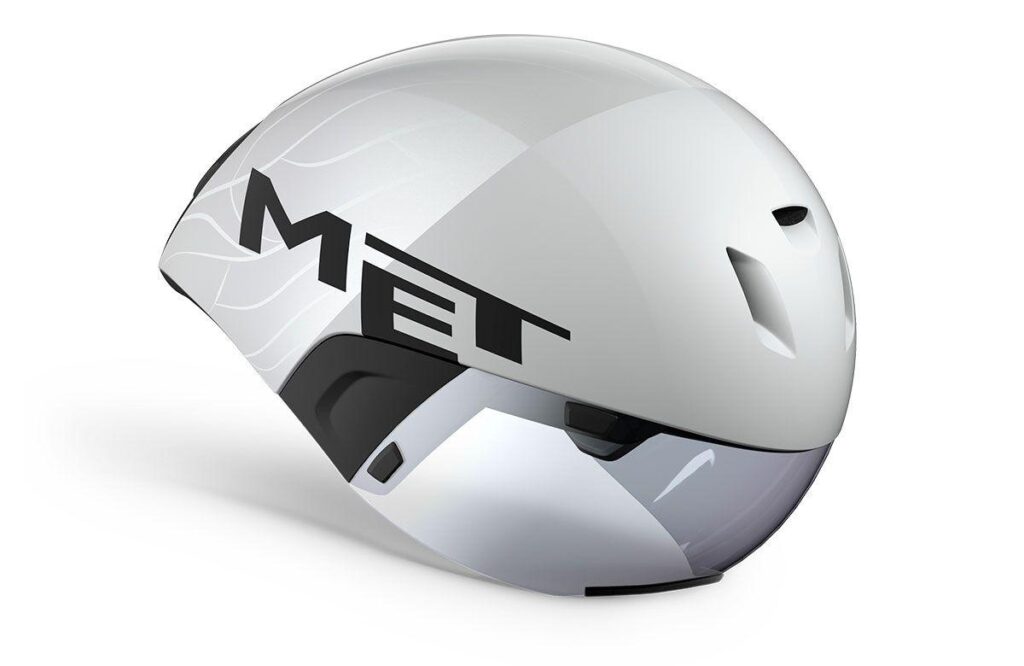In a groundbreaking study that promises to reshape the future of cycling safety and performance, a comprehensive evaluation of 47 different helmets has taken place, each undergoing rigorous wind tunnel testing. This unprecedented “aero shootout” has set out to determine which headgear not only protects cyclists but also enhances their aerodynamic advantage. With varying designs, materials, and features, these helmets were subjected to controlled conditions to assess their effectiveness in reducing drag and improving speed. As cycling enthusiasts and professionals gear up for the upcoming season, this extensive analysis offers invaluable insights into the crucial role of helmet technology in achieving peak performance on the road. In an era where every second counts, understanding the science behind these protective gears could be the key to staying ahead in competitive cycling.
Cutting-Edge Technology Elevates Helmet Design in Aerodynamic Performance
The realm of helmet design has been revolutionized by the integration of cutting-edge technology, propelling advancements that prioritize aerodynamic performance without compromising on safety. Through meticulous wind tunnel testing, designers are able to evaluate how different shapes, materials, and airflow dynamics interact under various conditions. The results of these tests are reshaping the landscape of competitive cycling and racing, providing athletes with helmets that boast enhanced efficiency and reduced drag. Key factors influencing this evolution include:
- Sleek Silhouettes: Helmets are increasingly being sculpted into aerodynamic forms that minimize wind resistance, optimizing the flow of air around the rider.
- Advanced Materials: The use of lightweight yet durable materials is crucial in creating helmets that not only perform well but also ensure safety at high speeds.
- Ventilation Innovation: Designers are incorporating strategic ventilation systems that maintain cooling without sacrificing aerodynamics.
As a testament to these advancements, the recent “aero shootout” encompassed an unprecedented range of 47 helmets, each subjected to rigorous assessments in a controlled wind tunnel environment. This comprehensive evaluation allowed for the identification of standout models and trends within the industry. The following table highlights some of the top-performing helmets based on their aerodynamic efficiency, showcasing their innovative features:
| Helmet Model | Aerodynamic Score | Key Features |
|---|---|---|
| Speedster X1 | 0.22 | Dynamic airflow design, lightweight carbon shell |
| AeroEdge Pro | 0.19 | Integrated ventilation, shock-absorbent padding |
| HyperVenture 5000 | 0.21 | Streamlined exterior, customizable fit |
This extensive analysis underscores the strides made in helmet technology, with leading brands pushing the boundaries of design to provide elite athletes with superior gear that enhances performance on the track.
Expert Analysis Reveals Key Factors Impacting Helmet Efficiency
Recent wind tunnel tests on 47 different helmets have brought to light several critical factors influencing their efficiency and performance in aerodynamic settings. The analysis, conducted in a state-of-the-art facility, has provided invaluable insights, particularly highlighting how shape, ventilation, and material composition directly correlate with a helmet’s ability to minimize drag. Helmets with more streamlined profiles outperformed bulkier designs, while those featuring strategically placed vents managed to enhance airflow without compromising safety standards.
Furthermore, the role of helmet weight emerged as a significant aspect, revealing that lighter options often delivered better aerodynamics without sacrificing durability. Test results ranked helmets based on their efficiency metrics, showcasing a range of designs tailored for specific cycling environments. The following table illustrates key performance indicators for top performers in the study:
| Helmet Model | Aerodynamic Score | Weight (grams) | Ventilation Rating |
|---|---|---|---|
| Speedster X1 | 9.8 | 250 | Excellent |
| AeroGuard Pro | 9.5 | 230 | Good |
| Velocity Shield | 9.3 | 260 | Very Good |
Top Recommendations for Cyclists Seeking Optimal Speed and Safety
As cyclists prioritize speed and safety, selecting the right helmet becomes crucial. After intense wind tunnel testing of 47 top models, several emerged as standout choices for their combination of aerodynamic efficiency and protective features. Key characteristics to consider include aerodynamic shape, ventilation systems, and weight. Look for helmets that feature an integrated visor, which not only reduces drag but also provides added eye protection against wind and debris. Furthermore, helmets equipped with MIPS (Multi-directional Impact Protection System) technology offer enhanced safety by allowing the helmet to rotate upon impact, minimizing the force transmitted to the brain.
When comparing helmets, cyclists should pay attention to the following specifications:
| Helmet Model | Aerodynamics Rating | MIPS Technology | Weight (grams) |
|---|---|---|---|
| Model A | Excellent | Yes | 240 |
| Model B | Very Good | No | 260 |
| Model C | Good | Yes | 230 |
Choosing a helmet that aligns with your riding style and speeds is vital. Consider attaching safety lights for enhanced visibility in low-light conditions and ensure the fit is snug without compromising comfort. Investing in the right gear not only boosts performance but also significantly enhances rider safety on the road.
In Conclusion
As the curtain falls on this exhaustive evaluation of 47 head protection systems, it’s clear that the quest for aerodynamic supremacy in the world of cycling helmets is more than just a race against the clock; it’s a sophisticated interplay of design, technology, and extensive testing. Our wind tunnel shootout not only showcased the leading contenders but also highlighted the subtle distinctions that can make all the difference for competitive cyclists.
With insights gleaned from rigorous testing, cyclists of all levels can make informed choices tailored to their needs-whether they prioritize speed, comfort, or safety. As manufacturers continue to innovate and improve, the landscape of cycling helmets promises to evolve, further underscoring the importance of thorough evaluation in sports equipment.
This comprehensive analysis serves as a guiding light in the ever-developing narrative of cycling gear, aiming to arm athletes with the knowledge necessary to push their boundaries. As we move forward, one thing remains clear: in the world of cycling, every second counts, and the right helmet can make all the difference in achieving personal bests and breaking barriers. Stay tuned for future updates as we track these advancements and keep you informed on what’s next in helmet technology.











